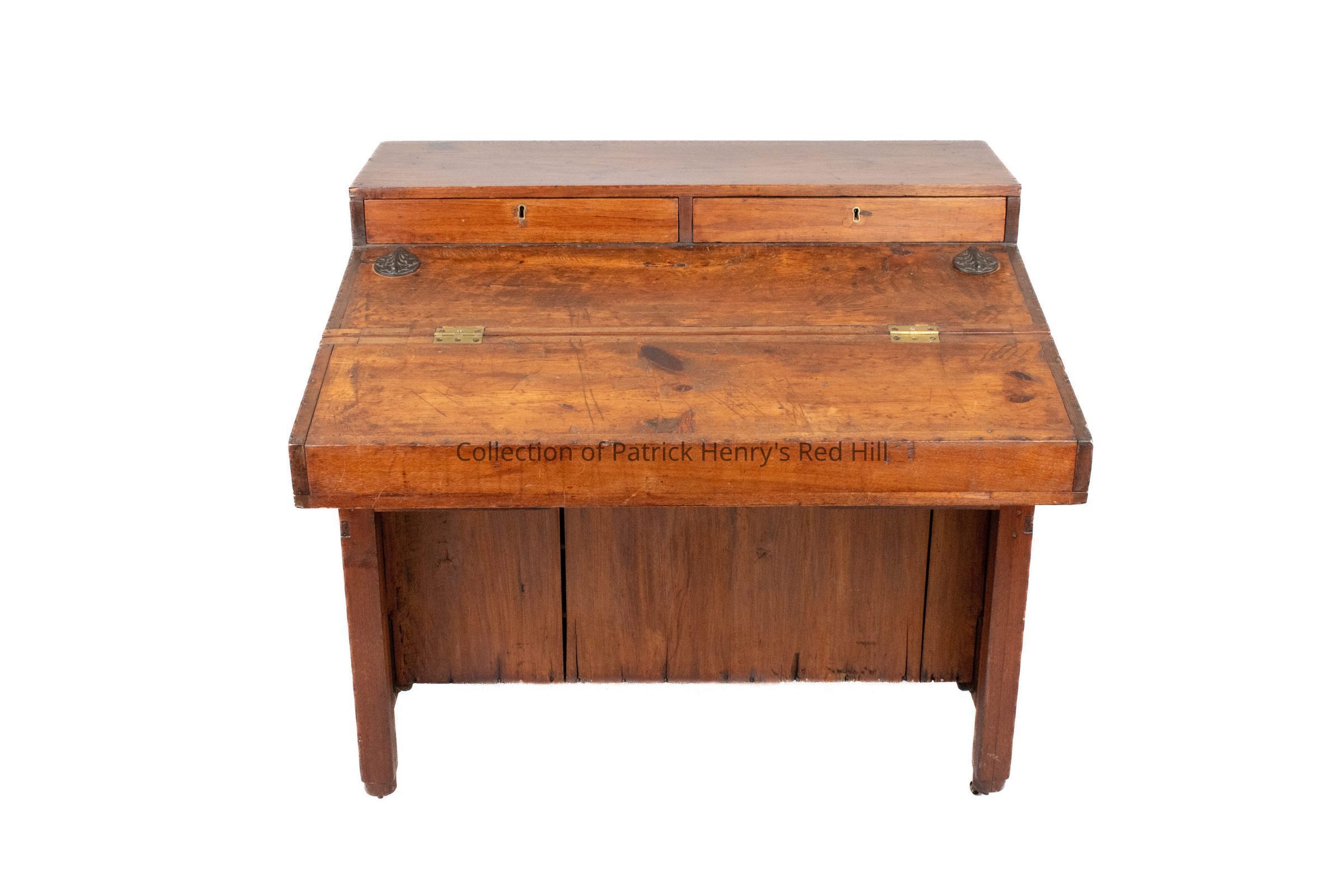Notes
This writing desk was made in Virginia in the late eighteenth century. It represents a very unusual form of southern decorative arts due to its form which combines writing desk with ledger cabinet in one unified piece.
The desk is supposed to have belonged to Patrick Henry. It would fit his unique requirements as a simple country lawyer. Patrick Henry possibly passed the desk to his son, John (1796–1868). Following John's death, the desk may have appeared in his estate inventory of Red Hill, taken in 1868, as "1 Writing Desk" in the upstairs entry.
John then may have given the desk to his son, William Wirt Henry (1831–1900). From Wirt Henry it came to his daughter, Lucy Gray Henry Harrison (1857–1944). According to her descendants, Ms. Harrison sold off many Henry relics towards the end of her life to meet financial difficulties. James S. Easley, former president of the Patrick Henry Memorial Foundation, believed that the desk was sold at this time to Layman Carroll.
Layman Carroll's father John W. Carroll had owned Quarter Place at Red Hill in the late 1800s and was presumably acquainted with Mrs. Harrison. Mr. Layman Carroll sold the piece in 1928 to Cora Wilkins Cummings and A. Gilmore Cummings, antique collectors in Bedford, Virginia. In 1945 James Easley discovered that the Cummings owned the Henry desk. He wrote inquiring about the possibility of the Foundation securing the desk as a loan or gift. Apparently the Cummings were not willing to part with the desk. No additional correspondence remains between the Foundation and the Cummings family. The desk remained in the Cummings family. It was jointly inherited by the grand-nieces of Cora Cummings, Mallery Knee Pittman and Susan Knee Smith.
In January 2001 Mrs. Pittman and Mrs. Smith contacted the Patrick Henry Memorial Foundation with an inquiry about the provenance of the desk. They had discovered the letter from James Easley to their great-uncle and wanted to confirm the ownership of the desk by Patrick Henry. After some correspondence with Edith Poindexter, curator at Red Hill, they offered to loan the desk to the foundation for exhibit. In February 2001 Ms. Poindexter and an appraiser, Russell Bernabo, flew to Charlotte, North Carolina to examine the desk. On April 21, 2001 a loan agreement was signed and the desk was brought back to Red Hill.
In January 2022, PHMF Curator Cody Youngblood attempted to contact Mrs. Pittman about renewing the loan or transferring it to PHMF as a gift. Mrs. Pittman was found to have died in 2017, but her funeral home put the lender's daughter into contact with the curator. On November 1, 2022, Mrs. Pittman's daughter decided to renew the loan.
